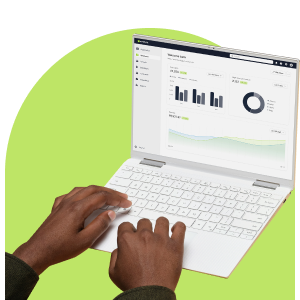Understanding the differences between analytics and metrics for marketing is a strategic advantage in an era where every digital interaction can be tracked and analysed.
Metrics provide raw numbers, like clicks and opens for emails, views for website pages, and likes and comments for social media. Analytics goes deeper, interpreting these numbers to provide actionable insights. This deeper understanding helps businesses anticipate and meet the needs of their clients, ensuring that each marketing campaign aligns seamlessly with broader business objectives.
Decoding Different Types of Metrics
Metrics such as page views or session durations on websites are straightforward enough, but their real value comes from contextual analysis. What do they tell us about user behaviour? How can we adjust our strategies to maintain and increase engagement based on that behaviour? For instance, a high number of page views suggests good initial interest, while short session durations indicate that the content is not engaging enough to hold attention.
Here’s how you can delve into different types of metrics to fine-tune your marketing strategies in email, website, and social media campaigns:
Lead Generation Metrics
The first touchpoint in any customer journey involves attracting potential clients. This is where lead generation metrics come into play. By analysing metrics like the number of new leads per campaign, the source of leads (from organic search, paid ads, and social media), and the cost per lead, you can quickly identify the most effective tactics for drawing in prospects. It’s not just about the volume of leads but also about the quality and cost-effectiveness each lead generates. For instance, if a social media or website campaign generates many leads but at a high cost, it may not be sustainable in the long-term compared to more cost-effective strategies.
Engagement Metrics
Once leads are generated, the next step is to engage them. Engagement metrics such as average session duration, pages per session, bounce rate, and social media interaction (likes, shares, comments) provide insights into how compelling and engaging your content is. These metrics are applicable to email, website, and social media campaigns. High engagement rates often correlate with more effective branding and deeper customer relationships. For example, analysing which types of content keep users engaged the longest or which posts get the most shares can guide your content strategy to focus on what truly resonates with your audience.
Conversion Metrics
Conversion metrics are the ultimate test of a campaign’s effectiveness, measuring how many leads turn into customers. These metrics include conversion rate, click-through rate (CTR), and cost per acquisition (CPA). Tracking these helps you understand not just how many but also how efficiently you’re converting browsers into buyers. For example, if your CTR is high but your conversion rate is low, it may indicate that the landing page needs to be more effective in persuading potential customers to take the next step.
Customer Lifetime Value (CLV)
Calculating the CLV involves estimating the total revenue a company can expect from a single customer account throughout its relationship. This metric helps businesses understand how much they should invest in retaining existing customers compared to acquiring new ones. By increasing the CLV, businesses can optimise marketing spend and create more personalised, engaging customer experiences that encourage long-term loyalty.
Dive into three types of metrics you need to measure the performance of your bulk email campaigns quickly and effectively.
Turning Data into Actionable Insights
The insights derived from these metrics can be helpful if acted upon strategically. Here’s how you can apply the data:
Personalise Interactions: With detailed data on customer behaviour, personalisation becomes easy. Segmenting your audience based on their interaction history allows for more targeted and relevant marketing efforts.
Optimise Content: Use engagement metrics to tailor your content to the interests and needs of your target audience. For example, increasing video production could be beneficial if video content has higher engagement rates than text.
Enhance Timing: Analysis of when your audience is most active or receptive can help optimise send times for emails or social media posts, potentially increasing engagement.
Our research into the top-performing emails in four different industries determined there really is a best day to send your email newsletter to maximise engagement.
Play Above Average by Benchmarking
Benchmarking against industry standards is not just about keeping up; it’s about setting and surpassing goals that align with the best in your field. When it comes to email marketing, knowing the industry averages for metrics such as open and click-through rates will help you set realistic goals for your email campaigns. Regularly comparing your campaign performances against the industry benchmarks will help you identify areas where you excel and others where adjustments are needed. For example, if your email marketing campaigns consistently outperform industry averages, delve deeper to understand why and how you can leverage this strength in other areas of your marketing.
Every two years, Everlytic analyses the billions of emails sent from our platform to see what the latest engagement benchmarks are. You can use these benchmarks to see how your email engagement compares to the averages in your industry and across the South African market.
Keep a Mindset of Improvement over Perfection
Using data analytics to refine and enhance marketing campaigns is not something you do once and never again. It is a dynamic process that involves regularly tweaking and improving based on datasets. Refining your approach could mean changing your content calendar, adjusting email send times, or revising your audience segments. The key is to make continuous, data-informed decisions that enhance the overall effectiveness of your marketing efforts.
Here are three things you can track to help you improve:
1. Use A/B Testing Regularly
A/B testing (or split testing) helps you better understand what resonates with your audience when you send out emails. You can gather data on what increases engagement and conversions by testing different elements of your emails, such as subject lines, content, and call-to-action buttons. Each test provides feedback that can be used to refine future campaigns.
2. Analyse Campaign Performance
After implementing changes, it’s crucial to analyse the results. This analysis should go beyond superficial metrics to understand the deep impact of the tweaks made. For instance, if changing a call-to-action (CTA) increases clicks but reduces conversions, it might indicate that while the button is more compelling, the content does not meet expectations.
3. Learning from Each Campaign
Every campaign offers valuable lessons. Documenting these lessons helps you understand what strategies work and what don’t, refining your approach over time. Include both quantitative data and qualitative insights, like customer feedback, to provide context to the numbers.
An A/B test (also known as a split test) is when you send two slightly different versions of the same email to a sample of your contacts to test which email performs best. Design your emails for optimal customer conversion by using the basics of A/B testing.
Track Your Data and Gain Insight with Everlytic
Looking for an email marketing software solution to help you gain insights into your email marketing strategy? With Everlytic, you can personalise your emails, do A/B testing, get reports to track your data, and so much more!



